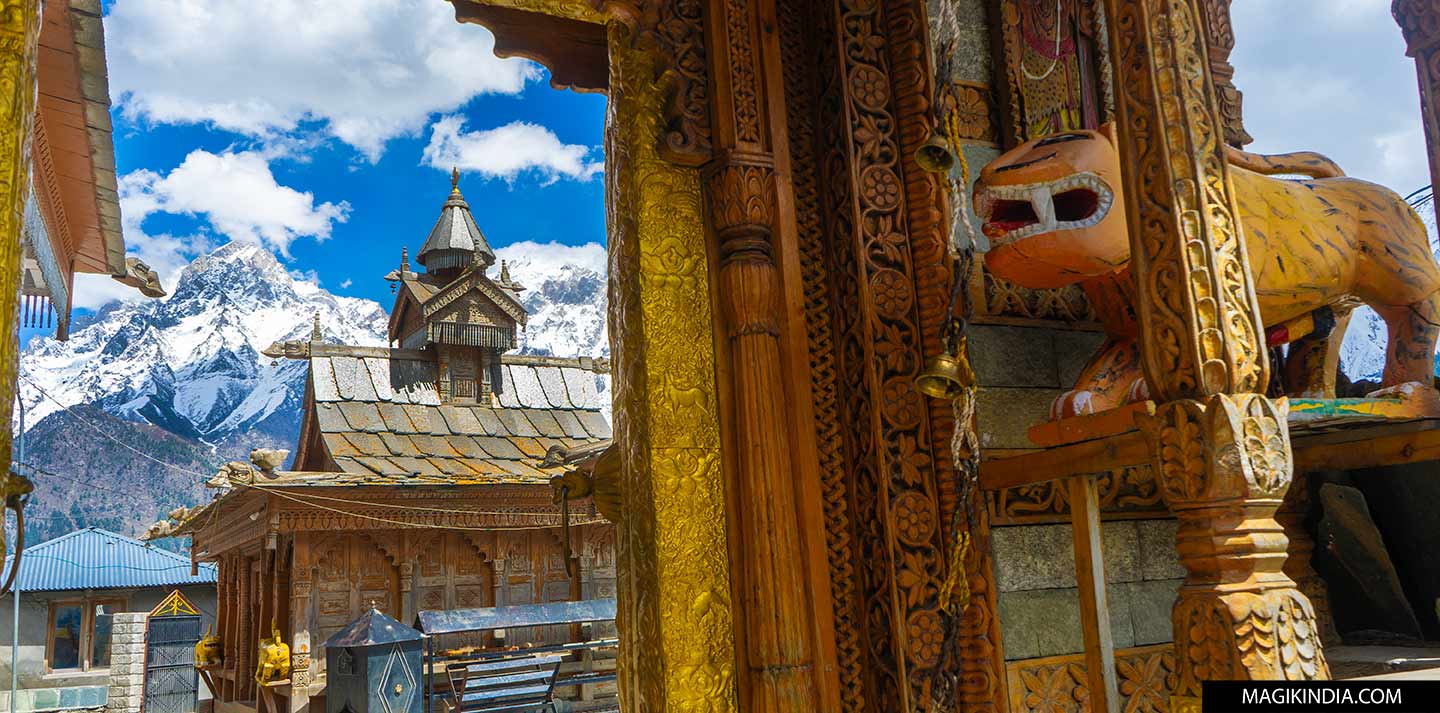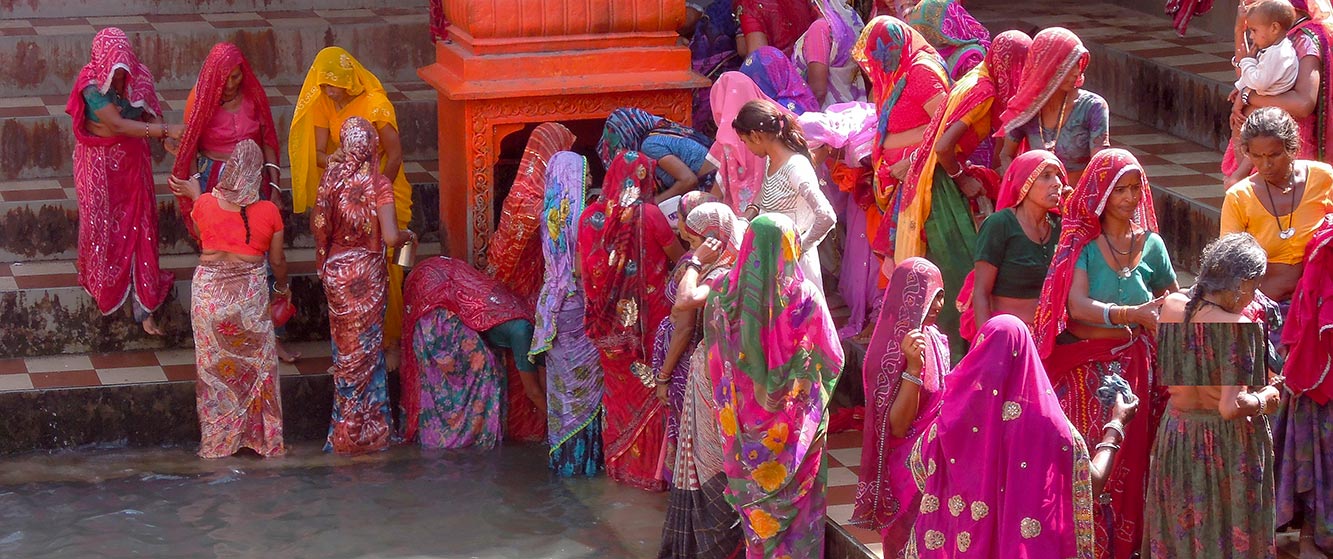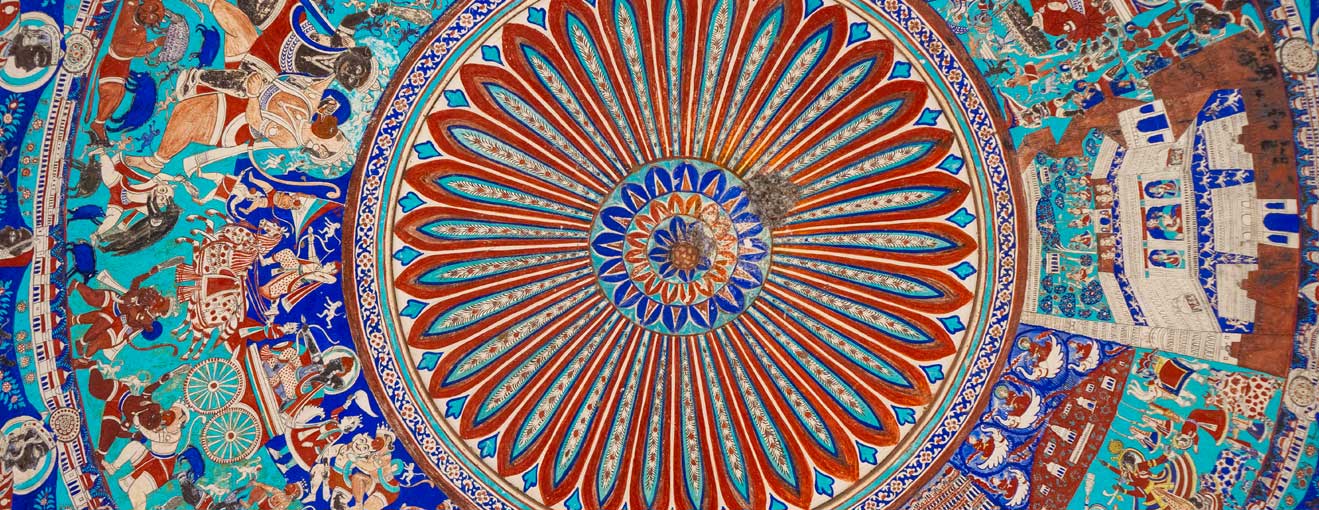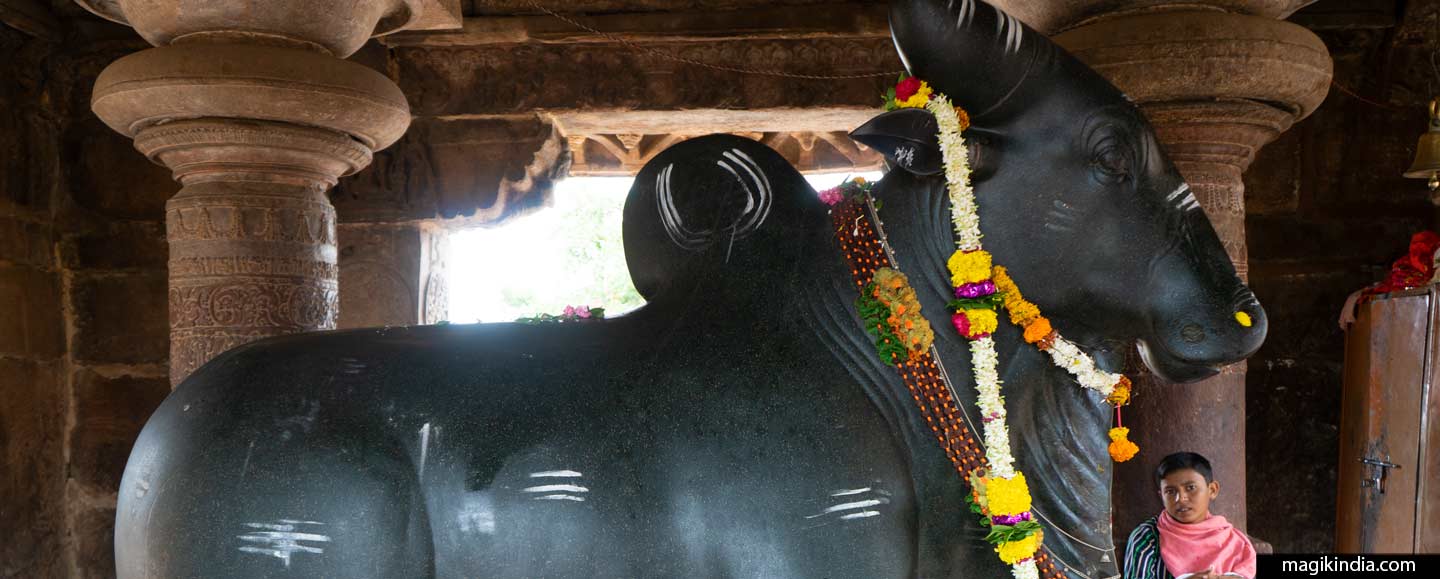
Pattadakal, Chalukya kings’ coronation place
Pattadakal, a World Heritage Site, is, along with Aihole and Badami, the architectural gems of northern Karnataka just like Beluru and Halebidu are those of the south. This site was not only used for the coronation of the Chalukyas rulers, but was also an important cultural center carried by a creative will. The remains of these monuments harmoniously mixing the architectural styles of the north and the south further attest to this new approach to temple construction.
Pattadakal is a complex comprising nine Hindu temples dedicated to Shiva and a Jain temple, all built from the 7th to 8th century CE. The place may have been chosen because of its proximity to the sacred Malaprabha River which, at this point, takes the direction of the North (uttara-vahini), in reverence to Mount Kailash, abode of the god Shiva.
Interactions with neighbouring empires such as Pallavas in Tamil Nadu may have influenced the aesthetics of Pattadakal monuments, which have two different styles of architecture: Nagara (north) and Dravidian (south). Some archaeologists even believe that it is here, in Pattadakal, that these two architectural forms were finalised and that they will reference for the constructions to come in India.
The Nagara and Dravidian styles are very architecturally distinct. One of the major differences between the two styles is the central tower. In the Dravidian style, it is pyramidal (called vimana or gopura) and, in the north, the tower is curvilinear and hive-shaped (called Shikhara).
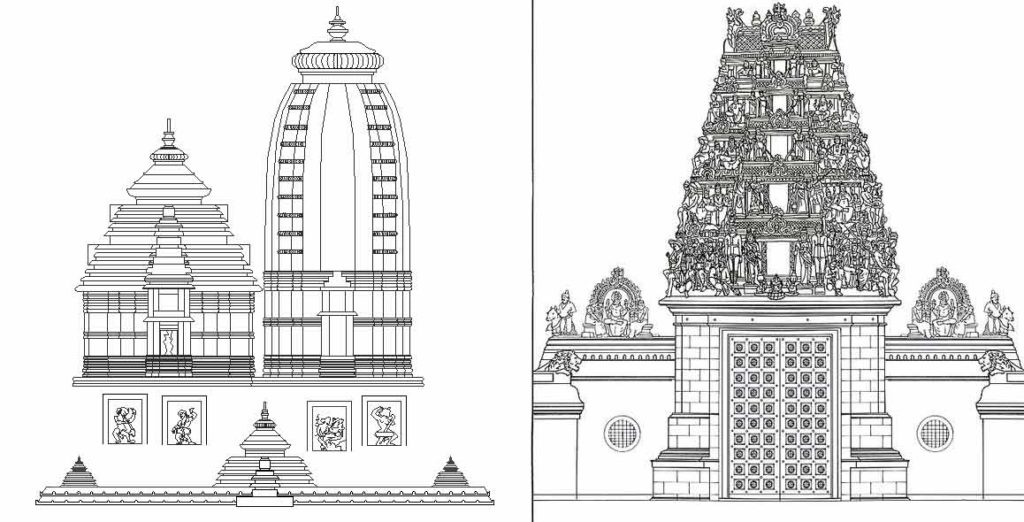
And now, follow the guide!
Virupaksha Temple
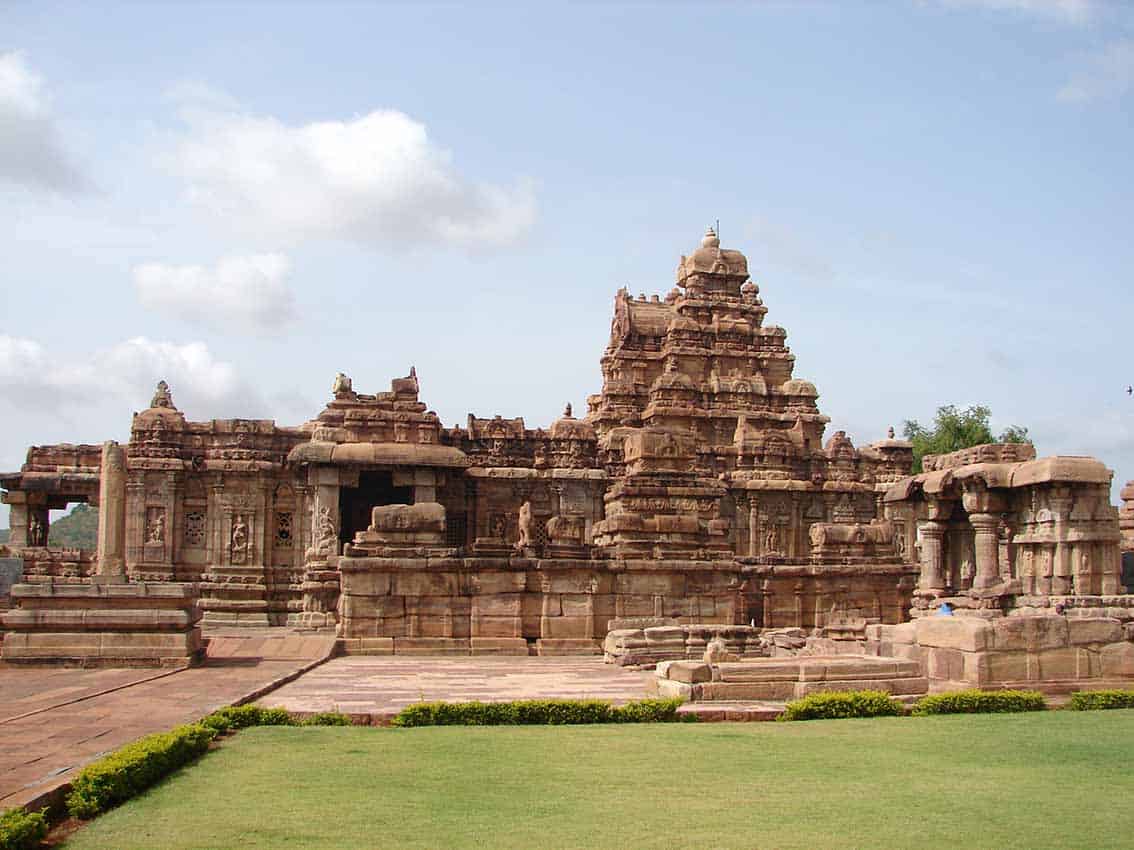
I begin the visit to the Pattadakal site with the largest and most elaborate temple of the group, that of Virupaksha, sponsored by Queen Lokmahadevi around 740 CE.
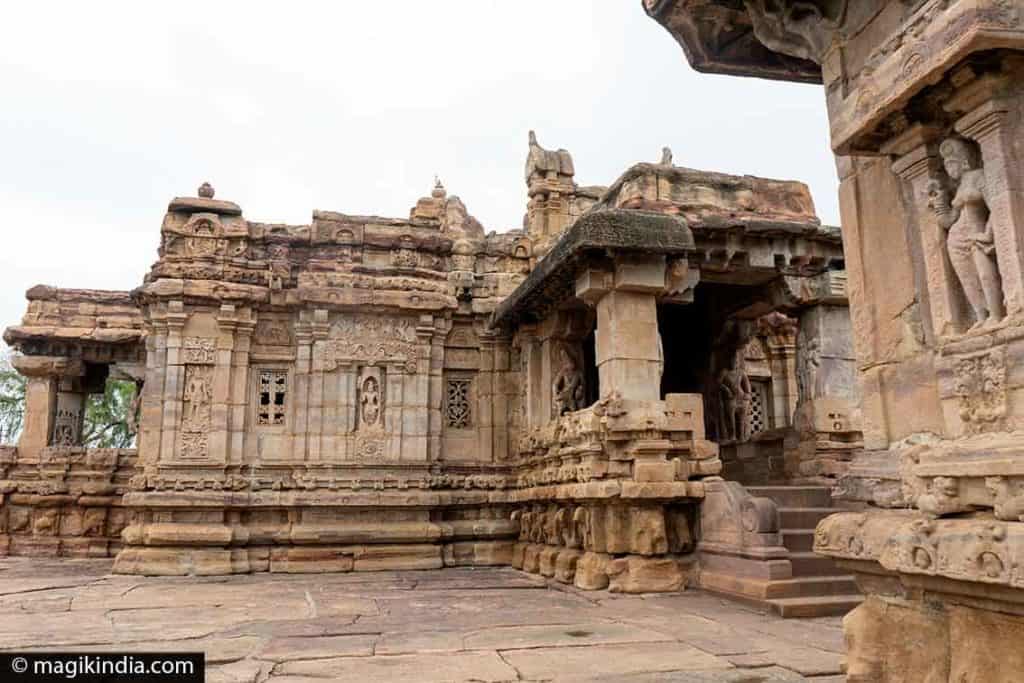
The temple, facing east, forms a rectangle delimited by walls, decorated with sculptures. The three-storey pyramid-shaped sanctuary tower tells us that it is Dravidian architecture.
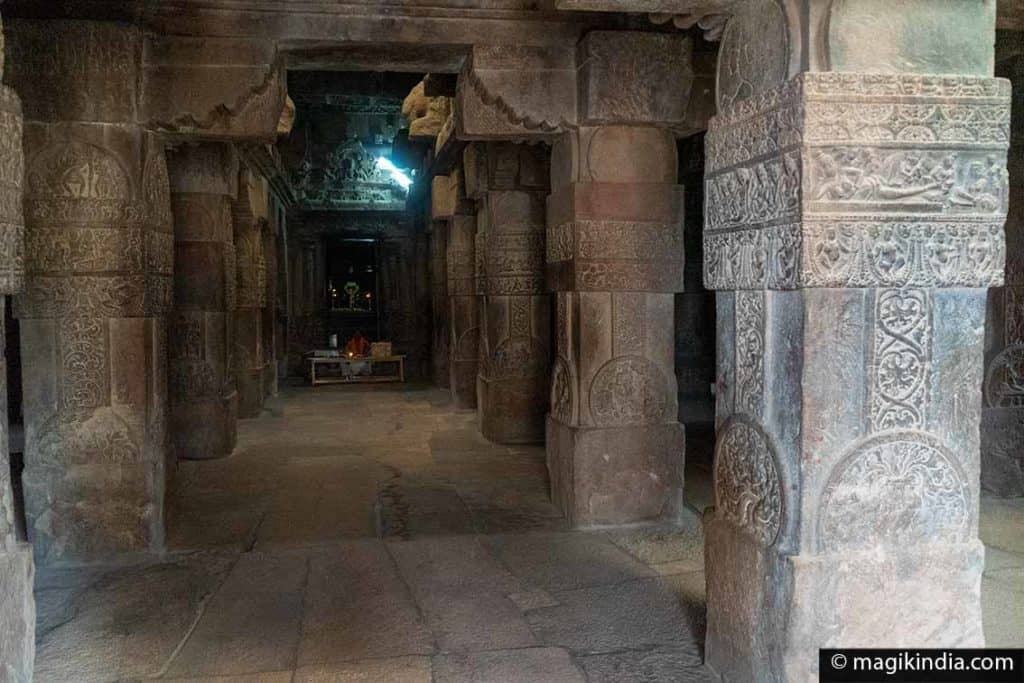
The 18-column mandapa (entrance hall) leads to the square garbha griya (shrine) which houses a Shiva Lingam, surrounded by a covered circumambulatory path. There were originally 32 other secondary shrines, but they have been destroyed.
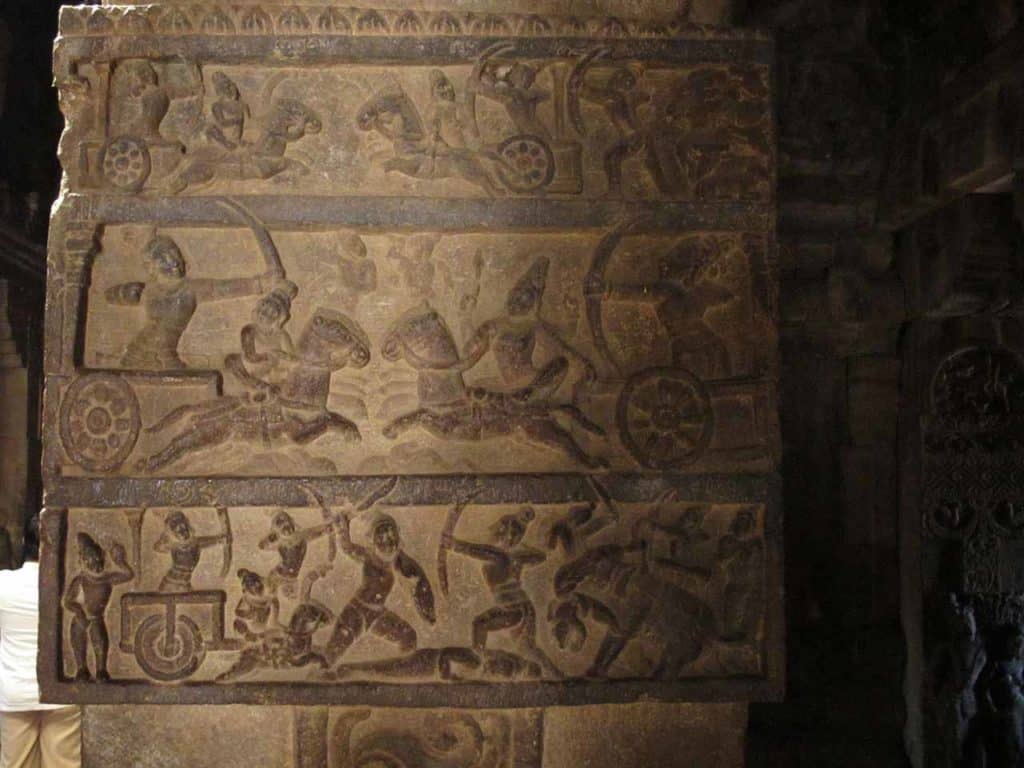
The walls of the sanctuary, like the pillars of the mandapa, are decorated with very detailed sculptures of deities linked to the worship of Shiva, Vishnu and Shakti. We also see, as in most of the temples on the site, frescoes from Indian epics (Mahabaratha, Ramayana), scenes from everyday life and lovers (Mithuna).
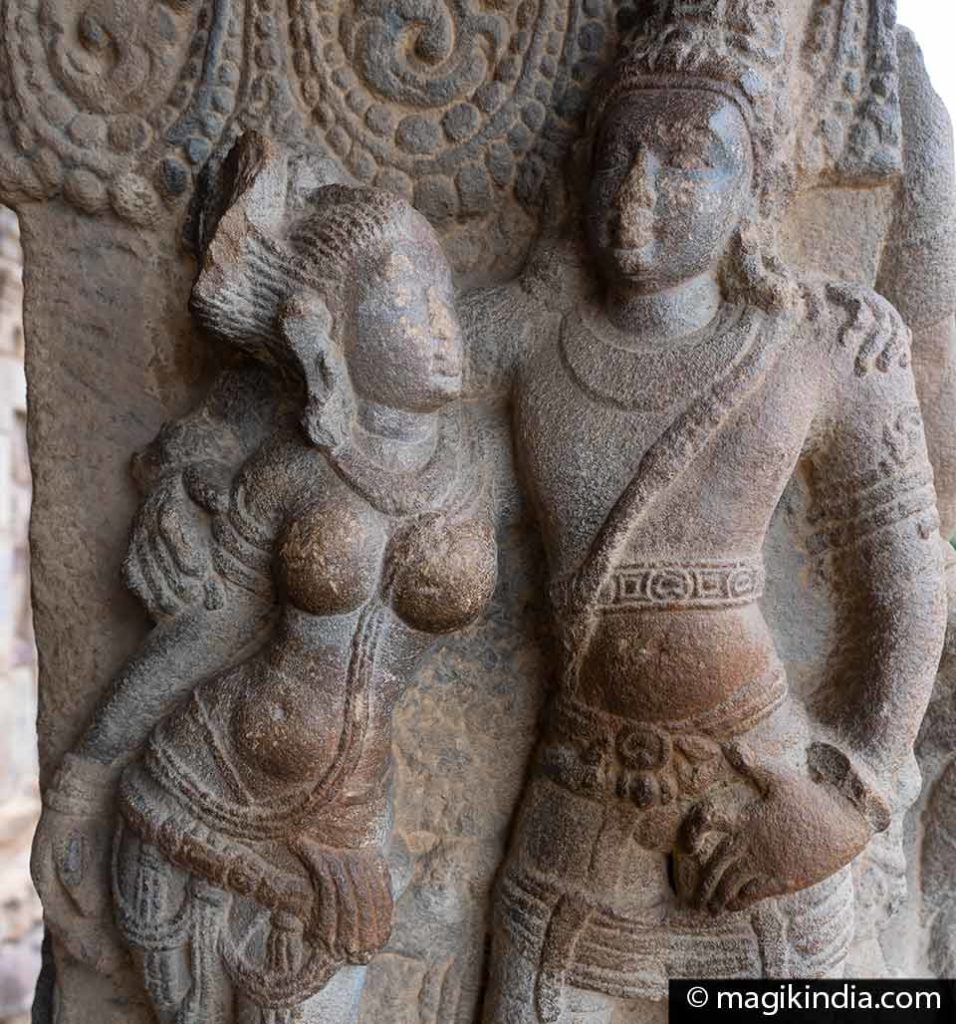
Outside, in a pavilion facing the sanctuary, is the imposing statue of the divine bull Nandi, the mount of the god Shiva, carved from a single block.
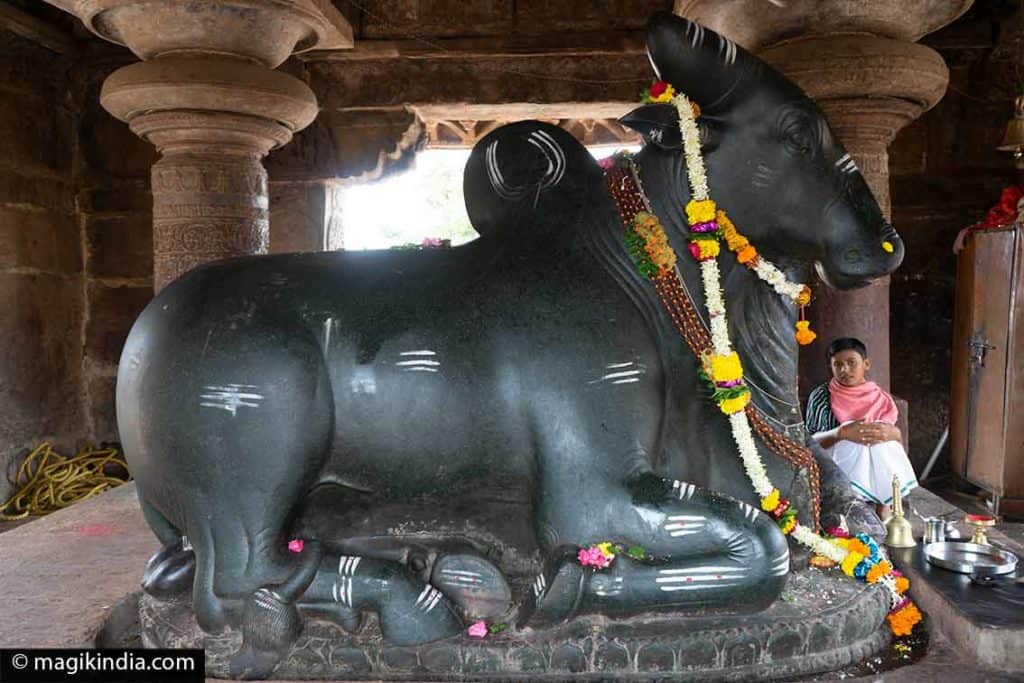
Mallikarjuna Temple
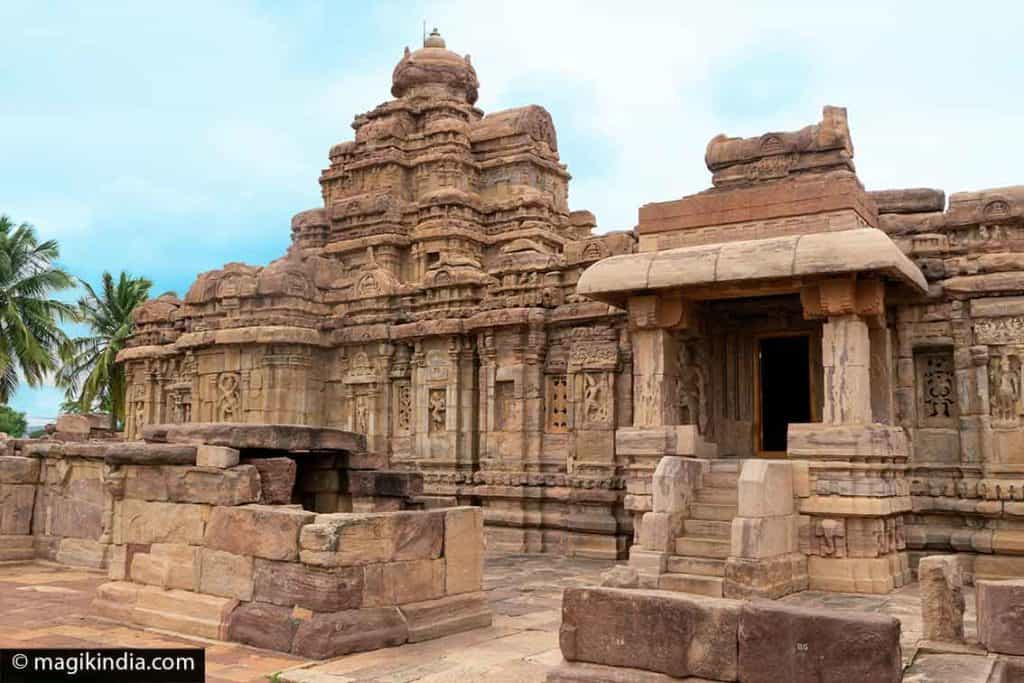
The Mallikarjuna temple is just as remarkable as that of Virupaksha. Dravidian style, it was sponsored in the 8th century by Queen Trailokyamahadevi, the sister of Queen Lokmahadevi and the wife of King Vikramadiya II.
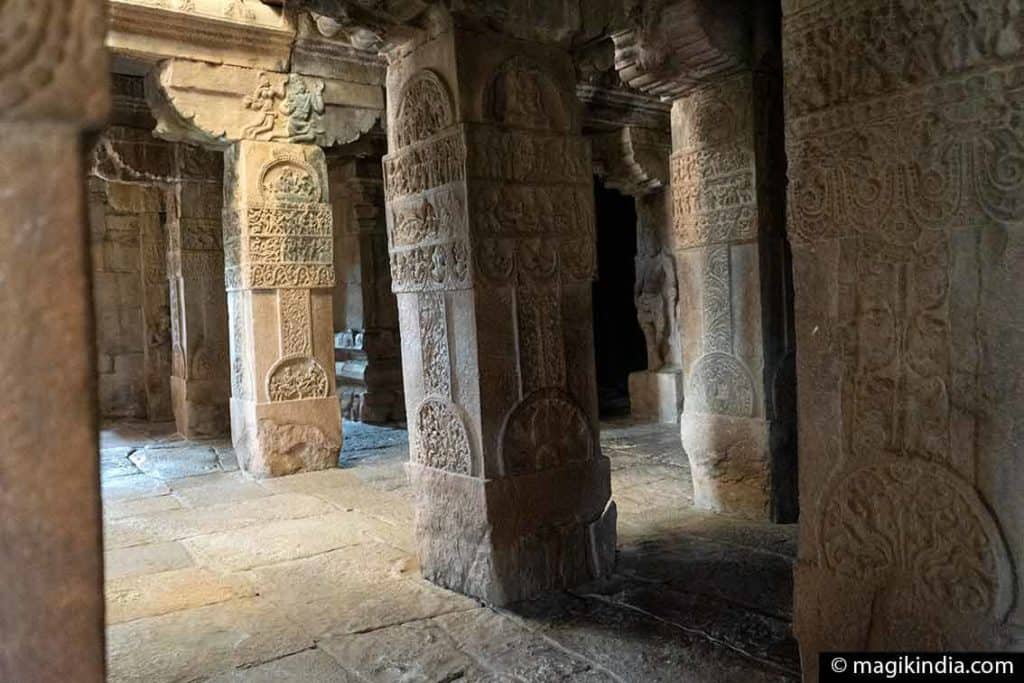
The finely chiseled friezes on the pillars of the mandapa draw particular attention, they tell the legends of the Hindu epics, the Rasa Lila (sacred dance) of lord Krishna and the Panchatantra, the Hindu fables featuring animals.
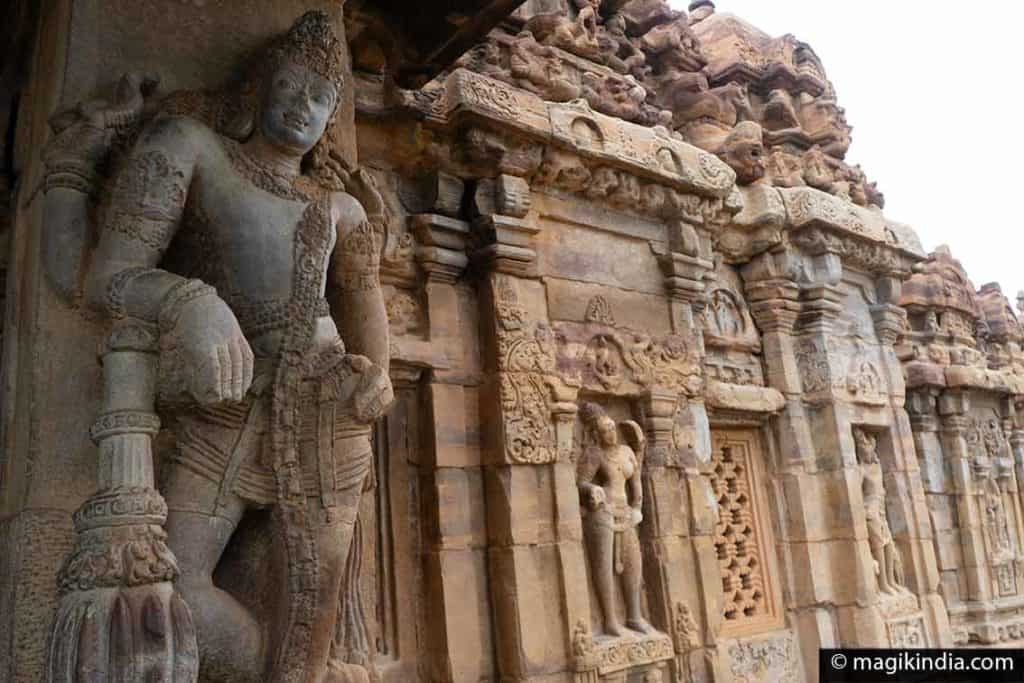
The sanctuary shelters a Shivalingam in black sandstone where the faithful light small oil lamps as an offering. The exterior facades are flanked by beautiful, still well-preserved statues representing various Hindu deities.

Sangameshwara Temple
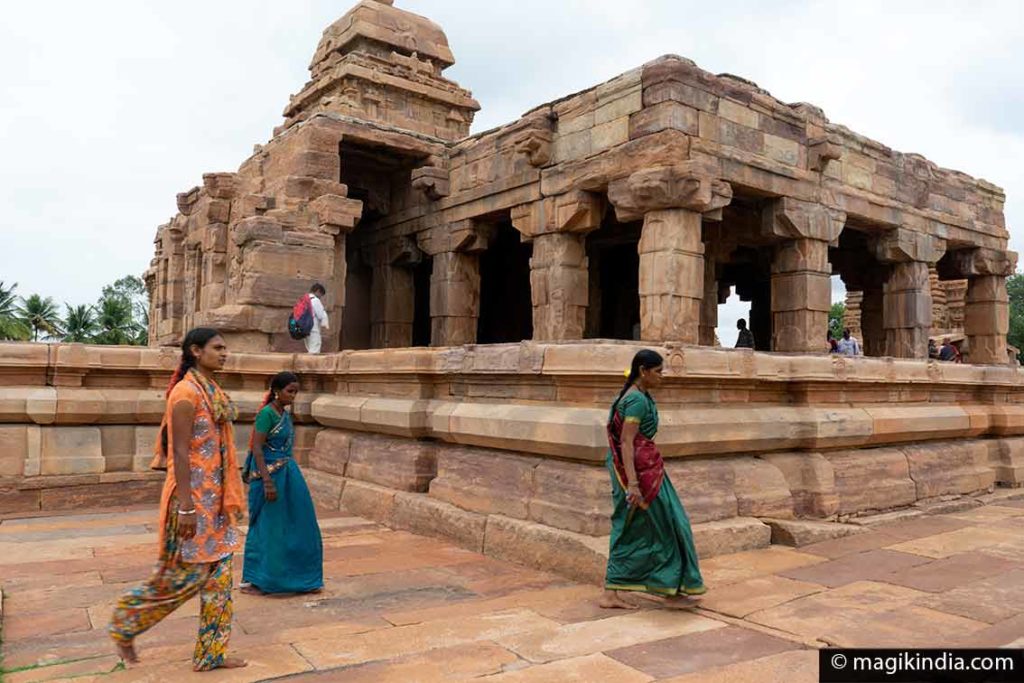
The Sangameshwara temple, also called Vijayeshvara temple, is partly incomplete, the death of its sponsor, King Vijayaditya, in 734 CE is surely the consequence.
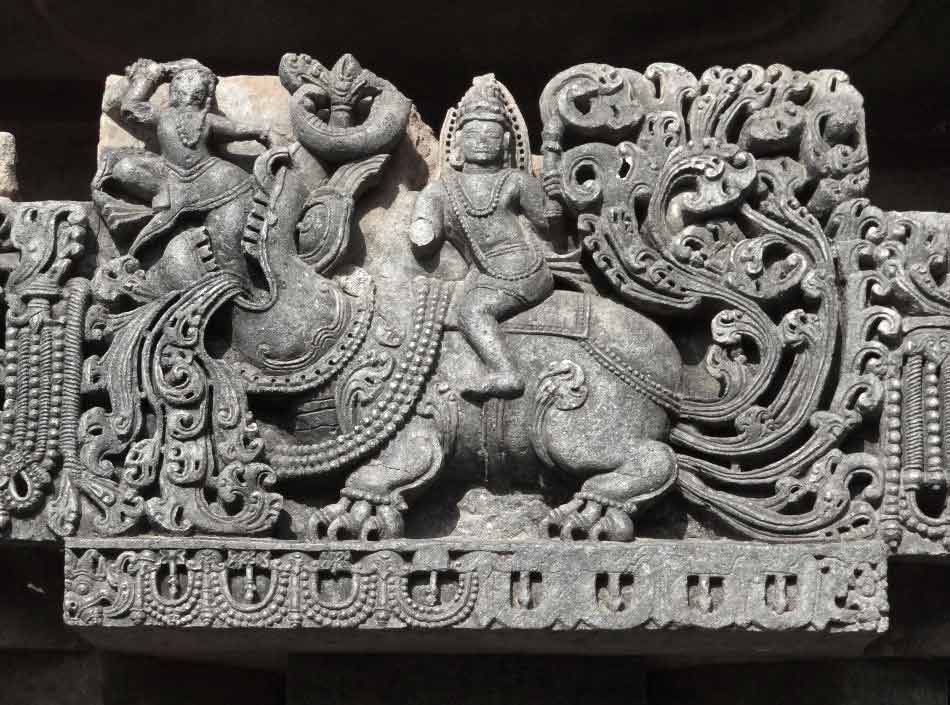
The temple walls, however, contain beautiful images of Vishnu and Shiva, decorative friezes of elephants and of yalis makaras, the mythical creature of southern India, generally represented with a crocodile head and jaw, an elephant trunk, a boar body and a peacock tail.
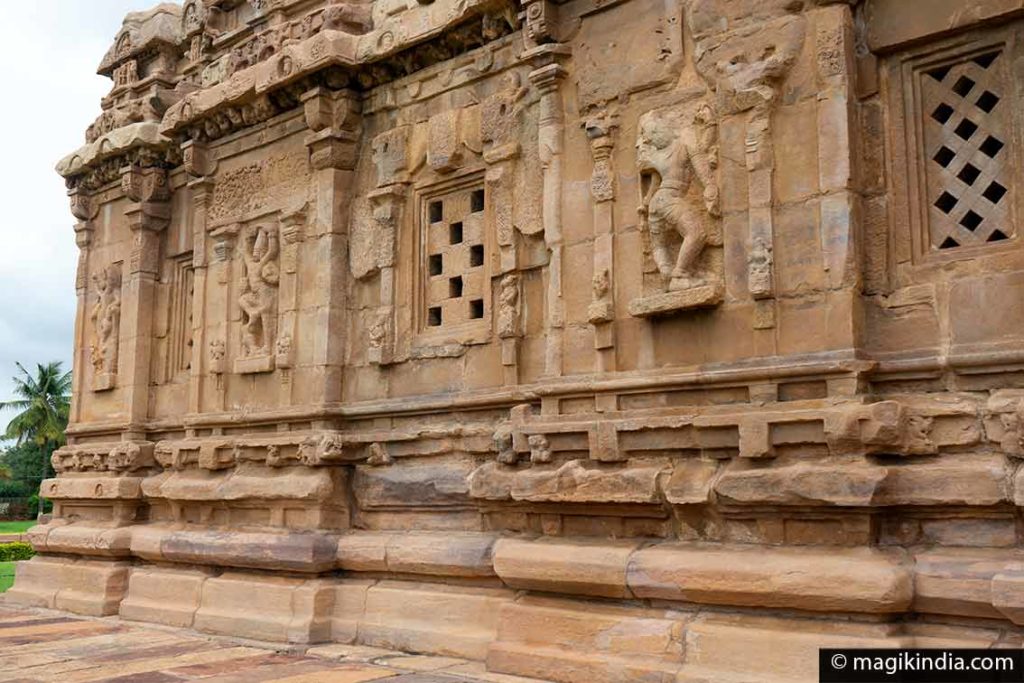
Minor temples on the Pattadakal site

The Kadasiddheshwara temple, dating from the middle of the 7th century AD, has a very simple architecture. The dwarapalaks (guardians) of the temple are almost destroyed, but if you look more closely on the sides of the temple, you will be able to see a Swastika (swastika) encrusted in the jalis (openwork windows).
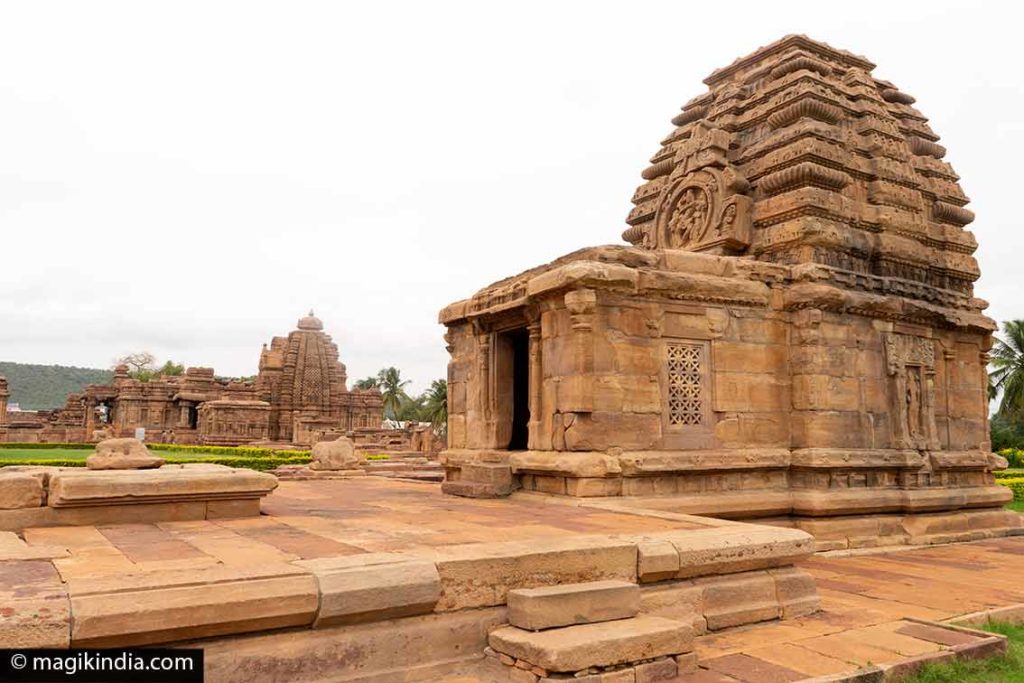
The Jambulingeshwara temple is just as modest as that of Kadasiddheshwara, its main interest is its sculpture of Nataraja (the dancing Shiva) on the front facade of the Shikhara.
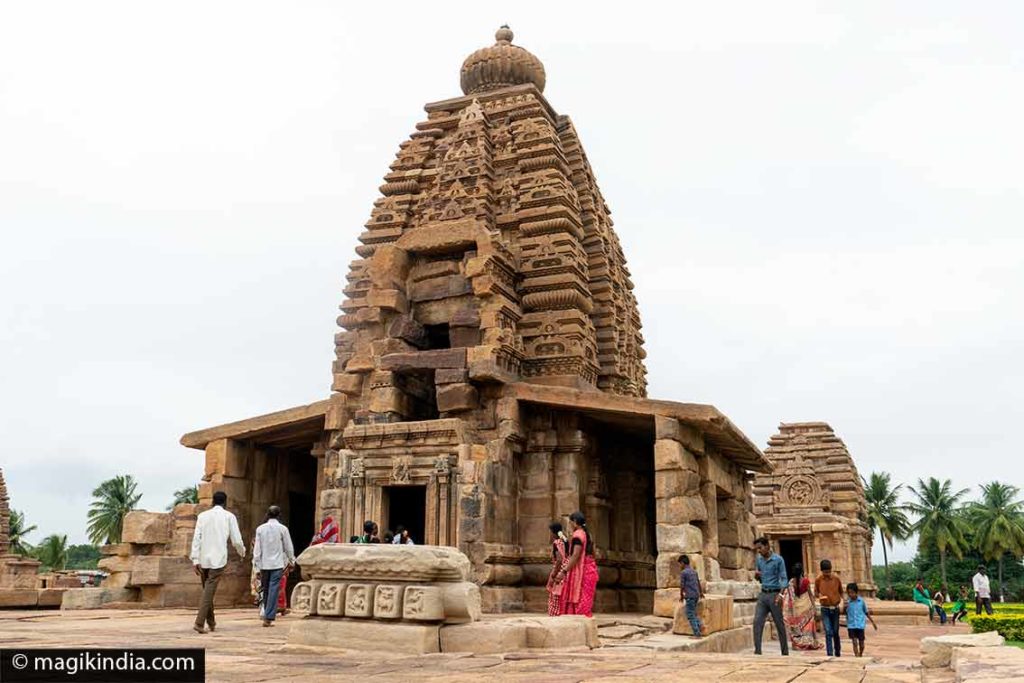
The temple of Galaganatha is mainly in ruins, with the exception of the southern part which contains a carved panel showing an eight-armed Shiva killing the demon Andhaka and wearing a garland of skulls as a yajnopavita (sacred thread worn by the Brahmins on the chest).
Narayana Jain temple
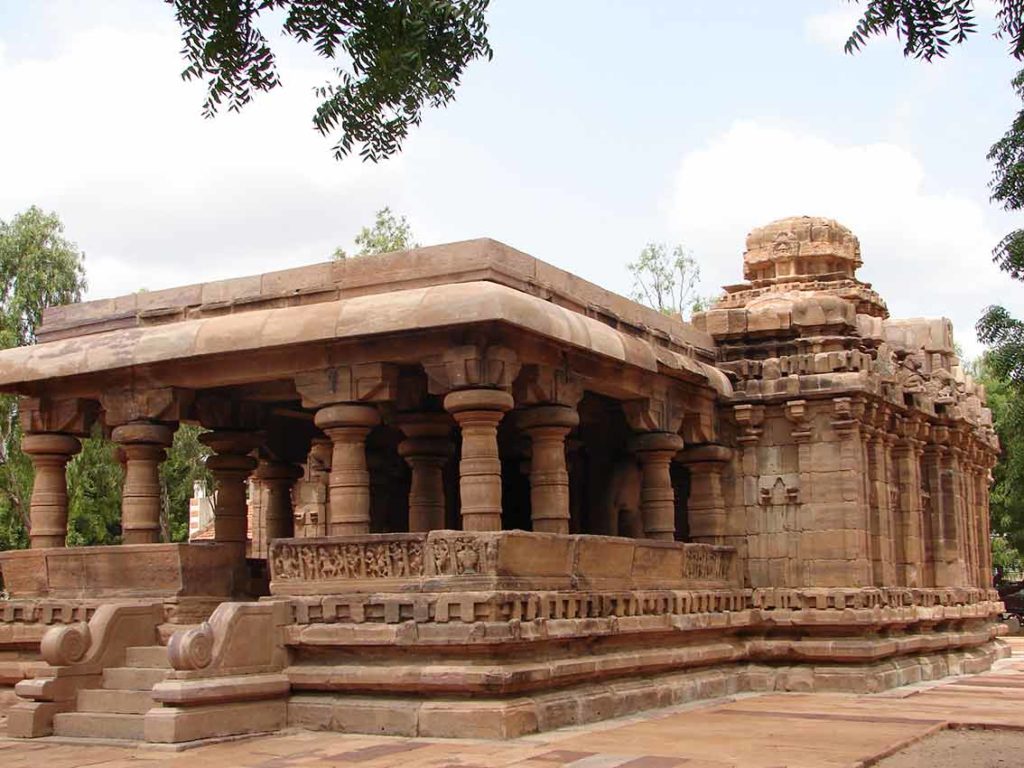
Jain Narayana Temple is 1 km from Pattadakal Complex, towards Badami. It is a 9th century monument built in the Dravidian style by the rulers Chalukyas Rashtrakutas and Kalyani.
The temple is erected on a raised platform and the mandapa with 16 pillars which seem turned, leads to the sanctuary housing a Shivalingam, which surely replaced the original Jain statue of the temple.



